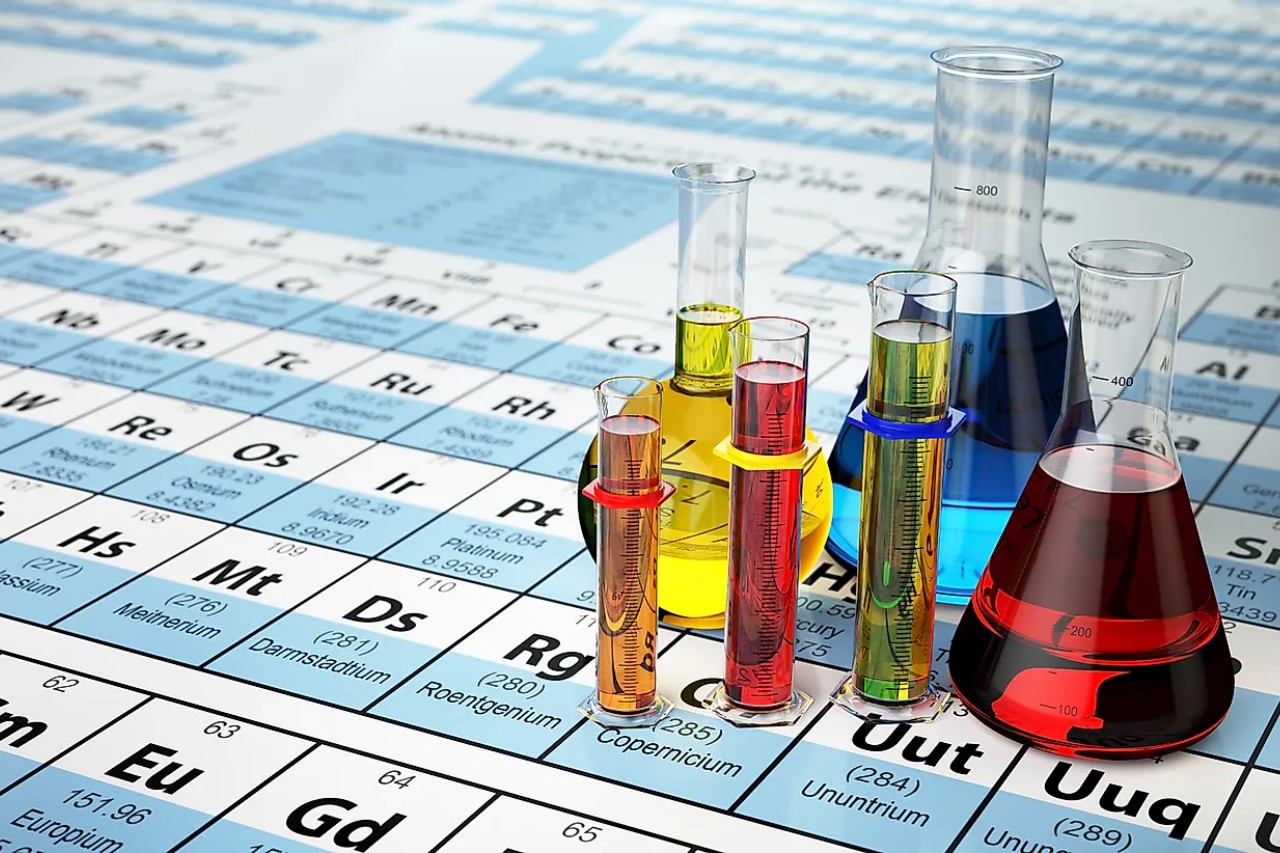
Periodicity, the systematic and predictable pattern of behavior, is a fundamental concept in chemistry that provides invaluable insights into the properties and behavior of elements. It is a phenomenon that underlies the entire periodic table, guiding scientists in their understanding of chemical reactions and allowing them to make predictions about the behavior of different elements.
In this article, we will explore 18 extraordinary facts about periodicity that will illuminate the fascinating world of chemistry. From understanding the periodic trends in electronegativity and atomic radius to uncovering the reasons behind the reactivity of certain elements, we will delve into the mechanisms that govern the periodic behavior of elements and the practical implications that arise from it.
Key Takeaways:
- The periodic table organizes elements based on their properties, helping scientists predict how they will behave and interact in chemical reactions.
- Dmitri Mendeleev created the first version of the periodic table in 1869, laying the foundation for our understanding of the behavior of elements in chemistry.
Dmitri Mendeleev developed the periodic table in 1869.
At the time, Mendeleev noticed a recurring pattern of chemical properties among elements. To help organize this information, he constructed the first version of the periodic table.
The periodic table contains 118 known elements.
From hydrogen (H) to oganesson (Og), the periodic table encompasses a wide range of elements, including metals, nonmetals, and metalloids.
Elements in the periodic table are arranged in periods and groups.
Periods are rows, and groups are columns. This arrangement helps identify shared chemical properties among elements.
The modern periodic table is organized based on atomic number.
Atomic number refers to the number of protons in an element’s nucleus. By ordering elements based on atomic number, the periodic table provides a more accurate representation of their properties.
The periodic table showcases recurring patterns.
Elements within the same group often exhibit similar chemical behaviors, such as valence electron configuration and reactivity.
The periodic table depicts element symbols and atomic masses.
Each element is represented by a unique symbol, such as H for hydrogen and O for oxygen. Atomic masses, which indicate the average mass of an element’s isotopes, are also displayed.
Noble gases occupy Group 18 of the periodic table.
Known for their low reactivity, noble gases, including helium, neon, and argon, have fully filled electron shells.
Transition metals are found in Groups 3 to 12.
Transition metals, such as iron, copper, and gold, are known for their ability to form various oxidation states and exhibit colorful compounds.
The periodic table predicts element properties.
Based on an element’s position in the periodic table, scientists can anticipate characteristics like atomic radius, ionization energy, and electronegativity.
Elements in the same period have the same number of electron shells.
For example, elements in Period 2, such as carbon, nitrogen, and oxygen, all have two electron shells.
Hydrogen is considered unique and doesn’t fit precisely into any group.
While hydrogen typically appears above Group 1, it exhibits properties distinct from alkali metals.
The lanthanides and actinides are located at the bottom of the periodic table.
These series of elements are often displayed separately to prevent the periodic table from becoming excessively wide.
The “18 Extraordinary Facts About Periodicity” can be utilized to predict chemical reactions.
Understanding the periodic trends allows scientists to anticipate how elements will interact and form compounds.
Electronegativity increases from left to right across a period.
Elements on the left side of the periodic table tend to have lower electronegativity values, while those on the right side have higher values.
The alkali metals are highly reactive and located in Group 1.
Elements like sodium and potassium readily donate electrons, making them prone to forming positive ions.
Halogens reside in Group 17 and are known for their high reactivity.
Fluorine, chlorine, and bromine belong to this group and frequently form compounds by accepting electrons.
The periodic table is continually expanding.
Scientists are constantly discovering new elements, which are added to the periodic table once their existence is confirmed.
The periodic table serves as a cornerstone for understanding chemistry.
Whether it’s identifying trends, predicting reactions, or studying the behavior of elements, the periodic table remains an invaluable resource for chemists, educators, and students alike.
Conclusion
In conclusion, the periodic table is a remarkable tool that has revolutionized the field of chemistry. Its organization of elements based on atomic number and electron configuration provides scientists with a framework to understand the properties and behavior of different elements. The periodicity of the table, with its repeating patterns of chemical and physical properties, allows us to predict and explain the behavior of elements, making it an invaluable asset in the study of chemistry.Furthermore, the periodic table continues to evolve as new elements are discovered and synthesized, expanding our understanding of the building blocks of matter. It serves as a testament to the ongoing quest for knowledge and the boundless possibilities of the scientific world.As we delve deeper into the intricate world of chemistry, let us not forget the marvels and complexities that the periodic table presents. It is a testament to the ingenuity of human explorers and a powerful tool that continues to shape our understanding of the universe.
FAQs
Q: What is periodicity in chemistry?
A: Periodicity in chemistry refers to the recurring patterns or trends observed in the properties of elements as arranged in the periodic table. These patterns include atomic radius, ionization energy, electron affinity, and chemical reactivity.
Q: How is the periodic table organized?
A: The periodic table is organized in rows called periods and columns called groups. Elements within the same group share similar chemical properties, while elements in the same period have the same number of electron shells.
Q: Who created the periodic table?
A: The modern periodic table was primarily developed by Dmitri Mendeleev, a Russian chemist, in the late 19th century. He arranged the elements according to their atomic masses and predicted the existence of new elements based on the gaps in the table.
Q: How many elements are there in the periodic table?
A: Currently, there are 118 known elements in the periodic table, with the most recent additions being elements 113-118, which were officially named in 2016.
Q: Why is the periodic table important in chemistry?
A: The periodic table is important in chemistry because it provides a systematic way of understanding and organizing the elements. It allows scientists to predict the properties and behavior of elements based on their position in the table, helping to explain patterns in chemical reactions and aiding in the development of new materials and technologies.
Unraveling periodicity's extraordinary facts is just the beginning! Explore further by delving into periodic trends, which reveal fascinating patterns across the table. Grasp a deeper understanding of the period table's structure and organization, unlocking its true potential. For those seeking advanced knowledge, Bott periodicity theorem holds captivating insights waiting to be discovered.
Was this page helpful?
Our commitment to delivering trustworthy and engaging content is at the heart of what we do. Each fact on our site is contributed by real users like you, bringing a wealth of diverse insights and information. To ensure the highest standards of accuracy and reliability, our dedicated editors meticulously review each submission. This process guarantees that the facts we share are not only fascinating but also credible. Trust in our commitment to quality and authenticity as you explore and learn with us.


